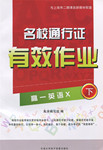题目内容
A little under one-third of U.S. families have no Internet access and do not plan to get it, with most of the holdouts seeing little use for it in their lives, according to a survey released on Friday.
Park Associates, a Dallas-based technology market research firm, said 29 percent of U.S. families, or 31 million homes, do not have Internet access and do not intend to subscribe(预订) to an Internet service over the next 12 months. The second annual National Technology Scan conducted by Park found that the main reason why potential customers say they do not subscribe to the Internet is because of the low value to their daily lives rather than concerns over cost.
Forty-four percent of these families say they are not interested in anything on the Internet, versus just 22 percent who say they cannot afford a computer or the cost of Internet service, the survey showed. The answer "I'm not sure how to use the Internet" came from 17 percent of participants who do not subscribe. The response "I do all my e-commerce shopping and YouTube-watching at work" was cited by 14 percent of Internet-access refuseniks. Three percent said the Internet doesn't reach their homes.
The study found U.S. broadband adoption grew to 52 percent over 2006, up from 42 percent in 2005.Roughly half of new subscribers converted(转变) from slower-speed, dial-up Internet access while the other half of families had no prior access.
"The industry continues to chip (击破)away at the core of non-subscribers, but has a long way to go," said John Barrett, director of research at Parks Associates. "Entertainment applications will be the key. If anything will pull in the holdouts, it's going to be applications that make the Internet more similar to pay-TV," he predicted.
1.What does the underlined word “holdouts” in the first paragraph most probably mean?
A.some American families
B.those who hold out one’s opinions
C.those who have been surveyed
D.those who still haven’t access to the Internet currently
2.Many potential customers refuse to subscribe to the Internet mainly because __________.
A.they show too much concern about the cost
B.they can find little value of it
C.they do most You Tube-watching at work
D.the Internet doesn’t reach their homes
3.From the passage we can infer that _____________.
A.It is not an easy job to transform those holdouts into the Internet users
B.people will adopt dial-up Internet access no more
C.many Americans enjoy doing e-commerce shopping at home
D.more than half of the population are using the Internet in 2005
4.According to John Barrett, what is the key to attracting more U.S. families to broadband service?
A.making the Internet look more similar to TV set
B.applying the Internet more to entertainment
C.providing more pay-TV programs
D.chipping away at the core of non-subscribers
5.Which is the best title for the passage?
A.Web develops with technology
B.The present situation of web
C.Many Americans see little point to web
D.It is urgent to promote web service
DBABC

 名校通行证有效作业系列答案
名校通行证有效作业系列答案The following are four kinds of medicine. How to use the medicine is very important. Never take some by mistake.
| Take the medicine with water, followed by one tablet every eight hours, as required. For further nighttime and early morning, take two tablets at bedtime. Do not take more than six tablets in 24 hours. For children between six and twelve years old, give half the adult dosage(剂量w.w.w.k.s.5.u.c.o.m). For children under six years old, go to your doctor for advice. Reduce dosage if nervousness, restlessness or sleeplessness takes place. |
| Each pill of the medicine taken three times every day for fourteen-year- olds. As usual, a pill at 6:00a.m. before breakfast, one before 11:00 and one before sleep. Not for children under six years old and old persons with heart attack. |
| The medicine for a person with a fever. Once two pills a day before sleep for adults. Don’t take the medicine without fever. Half for children under 12 years old. For children with a high fever, go to see a doctor at once. |
| The medicine taken three times a day, once five pills for adults with a cold. Half of the pills for children under 14 years old. Take the medicine before breakfast, lunch, supper or before sleep. |
53. If a little child under six has a fever, it’s suggested that he ________.
A. take two tablets before sleep B. stop to take another pill
C. take one tablet before sleep D. go to see a doctor
54. Obviously a kind of medicine mentioned above isn’t proper for ________, judging from the information.
A. children over twelve years old B. some adults of 18 years old
C. some old persons with heart attack D. neither adults nor children
55. When an adult has a cold, he had better __________.
A. have as many as fifteen pills a day B. have twice a day
C. have four times a day D. have nine pills a day
56. How many kinds of medicine can be taken by children of seven years old?
A. Two kinds. B. Three kinds. C. None. D. Four kinds.